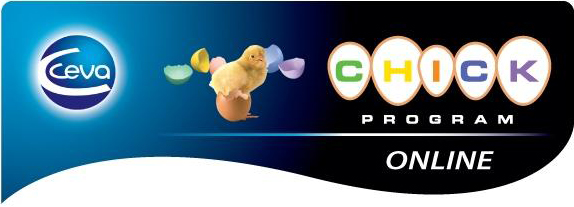The information below is presented by ThePoultrySite.com on behalf of CEVA SANTE ANIMALE.
If you wish to contact CEVA SANTE ANIMALE. please visit their contact page
If you wish to contact CEVA SANTE ANIMALE. please visit their contact page
Online Bulletins

2006

January - Spray Vaccination in the Hatcheries, Key Points to Achieve Proper Immunization of the Day-old Chicks
Over the years, poultry producers have shown a preference for vaccinating their chicks in the hatchery. Some of the reasons include the opportunity of massive vaccination as all day-old chicks (DOC) are confined in a small space, the availability of highly automatic equipments for hatchery, the awareness that this is the best way to face early challenge in the farms and to have more consistent and standardized results than vaccinating in different farms.

March - Early Chick and Poultry Mortality
Recently reference has been made to the possible role of low levels of blood glucose in triggering some of the non specific early mortality problems noted with chicks and poults .
A recent article by Dr. W.E. Donaldson provides further interesting information on the importance of maintaining blood glucose levels as a defense against stress.

May - Decontamination of the Hatcheries - Rooms and Equipments
Decontamination is a crucial element for sanitary risk control by continuously lowering the microbial load inside the hatchery. In this paper, cleaning and disinfection, the essential points required to succeed in this task will be detailed.

July - Embryonic Development
The purpose of this article is to teach the reader how to recognize good incubating eggs from poor incubating eggs on the one hand and, when opening an egg, to determine its development stage and the date of a potential problem, on the other hand.
Thorough knowledge of embryonic development is an aid in understanding the requirements for the good development of the future chick and the reasons why some incubation phases are crucial.
Such knowledge is also the basis for embryo-diagnosis, which helps to determine the age and cause of death of the embryo with the aim to remedy this phenomenon and improve hatcheries’ performances.

September - Embryonic Development, Day by Day
An Illustrated day by day look at the development of a fertilized egg, from the initial forming stages to the emergence of the chick from the egg.

November - Vaccination in the Hatcheries
Why decide to perform vaccinations at the hachery when these can be carried out on the farm? Why still adding to the number of operations undergone by chicks (sexing, sorting, packing in boxes, etc.) and delaying delivery even more? Because there are multiple pros to it, which largely outweigh the cons. 1.1.
GENERAL REMINDER: Product indications, usage instructions & withdrawal periods may vary by Country. Always follow label instructions and consult your veteriarian or poultry health adviser. |
|
This page contains information on veterinary pharmaceutical and biological products that are sold in several different countries and areas where they may be marketed under different trade names and pursuant to different regulatory approvals. Accordingly, ThePoultrySite and CEVA SANTE ANIMALE give no guarantee that the details presented are correct with respect to all locations.
|










